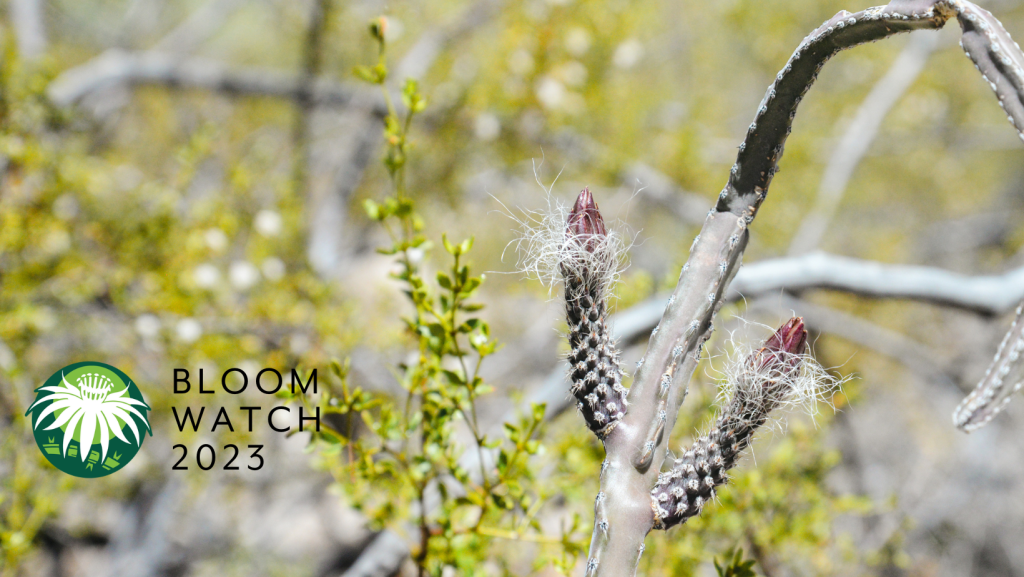
Bloom Watch #8
July 18, 2023An Extrafloral Moment
As of Tuesday morning, the buds are stalled between 40 and 55 mm. Thanks to the rainstorm that came through last night we expect movement in the next few days. They are taking their time, waiting for the perfect time to bloom. Let’s remember to take things slow in this hot weather too!
In the meantime, let’s talk about cactus biology!
One day when I was visiting the Queen’s Court at the Overlook, I noticed something different. Tiny white spheres dotting some of the flowering branches of the Peniocereus. At first, I was concerned it might be honeydew from sap-sucking insect pests! However, I’d read about extrafloral nectaries on barrel cacti and held out hope that I might be observing them on the queens.

Extrafloral nectaries are glands that produce a sugary substance on a plant that exists separately from flowers.
Here is some cactus anatomy for context.
Evolution can take one facet of an organism that is used for a specific function and mold it like a piece of clay over time to fit a different function. Cacti are unique from other succulents by having what are called areoles. These evolved from normal lateral shoots that at one time had separate buds spaced out along the stem.
They became compact areas where spines, leaves, branches, and flowers all emerge. From a distance, they may look like an asterisk * thanks to the spines. In the case of our Queens, unique areoles occur on the flowering branches of our Peniocereus oaxacensis and Peniocereus rosei and this is where the extrafloral nectaries occur.
We’ve established that extrafloral nectaries (EFN’s) are specialized structures that produce nectar without a flower. They occur in many plants and not just cacti. If you see a tiny bump on a plant exuding a droplet of dew, it may be an EFN. Evolution gets creative when it comes to cacti; in particular, they can have different types of EFN’s. For example, Ferocactus emoryi, one of our native barrel cactus, has small round modified spines that look like little bumps. Harrisia pomanensis, also known as moon cactus, secretes nectar from totally normal-looking spines. Some also have specialized stem tissue like Pachycereus gatesii, a cousin of the senita. And still, others secrete nectar from tiny scale-like leaves at the base of the areole, as do our Peniocereus in the spotlight. (source)
Why make nectar without a flower? For what purpose does the nectar serve, if not for attracting pollinators? Let’s remember that plants are in symbiosis with many insects that live on, under, and inside them. For many plants, an important insect friend is the ant. Ants will protect a food source from other herbivorous insects. In the case of cacti, ants can take care of any bugs that get past the spines and would otherwise like to eat a juicy cactus.
The closer you look the more you will realize what an intricate ecosystem the Sonoran Desert truly is.
By Tracey Till, Propagation Associate
Don’t miss the big night! Sign up for Bloom Watch emails here.
Be sure you select “Bloom Watch” on the dropdown menu!



